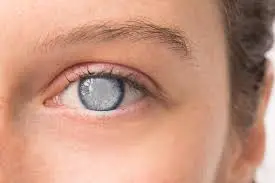
Understanding Cataracts: Causes, Symptoms, and Treatment Options
Introduction: Cataracts are a common eye condition characterized by clouding of the eye’s natural lens, leading to blurred or impaired vision. In this blog post, we’ll explore what cataracts are, their causes, symptoms, and available treatment options to help you better understand and manage this condition.
- What Are Cataracts?
- Define cataracts as a progressive condition in which the clear lens inside the eye becomes cloudy or opaque, impairing vision.
- Explain how cataracts develop gradually over time and can affect one or both eyes.
- Causes of Cataracts:
- Explore the various factors that can contribute to the development of cataracts, including aging, ultraviolet (UV) light exposure, smoking, diabetes, and certain medications.
- Discuss how cataracts may also be present at birth (congenital cataracts) or develop as a result of injury or trauma to the eye (traumatic cataracts).
- Symptoms of Cataracts:
- Outline common symptoms associated with cataracts, such as blurry or cloudy vision, difficulty seeing at night, increased sensitivity to light (glare), and seeing halos around lights.
- Highlight how cataracts can impact daily activities such as reading, driving, and watching television.
- Diagnosis of Cataracts:
- Describe the diagnostic process for cataracts, which typically involves a comprehensive eye examination by an eye care professional.
- Explain how visual acuity tests, slit-lamp examinations, and other specialized tests can help determine the presence and severity of cataracts.
- Treatment Options for Cataracts: a. Lifestyle Modifications: Discuss lifestyle changes that may help slow the progression of cataracts, such as wearing sunglasses with UV protection and quitting smoking. b. Eyeglasses or Contact Lenses: Explain how prescription eyewear can temporarily improve vision in the early stages of cataracts. c. Cataract Surgery: Provide an overview of cataract surgery, the most effective treatment for advanced cataracts, in which the clouded lens is removed and replaced with an artificial intraocular lens (IOL). d. Intraocular Lens Options: Discuss different types of IOLs available, including monofocal, multifocal, and toric lenses, and their respective benefits and considerations.
- Recovery and Outlook:
- Offer insights into the recovery process following cataract surgery, including post-operative care instructions and expected outcomes.
- Emphasize the significant improvement in vision and quality of life that many individuals experience after cataract surgery.
Conclusion: Cataracts are a common age-related eye condition that can significantly impact vision and quality of life. By understanding the causes, symptoms, and treatment options for cataracts, individuals can take proactive steps to preserve their vision and seek appropriate care when needed. If you or a loved one is experiencing symptoms of cataracts, consult with an eye care professional for personalized evaluation and management.
